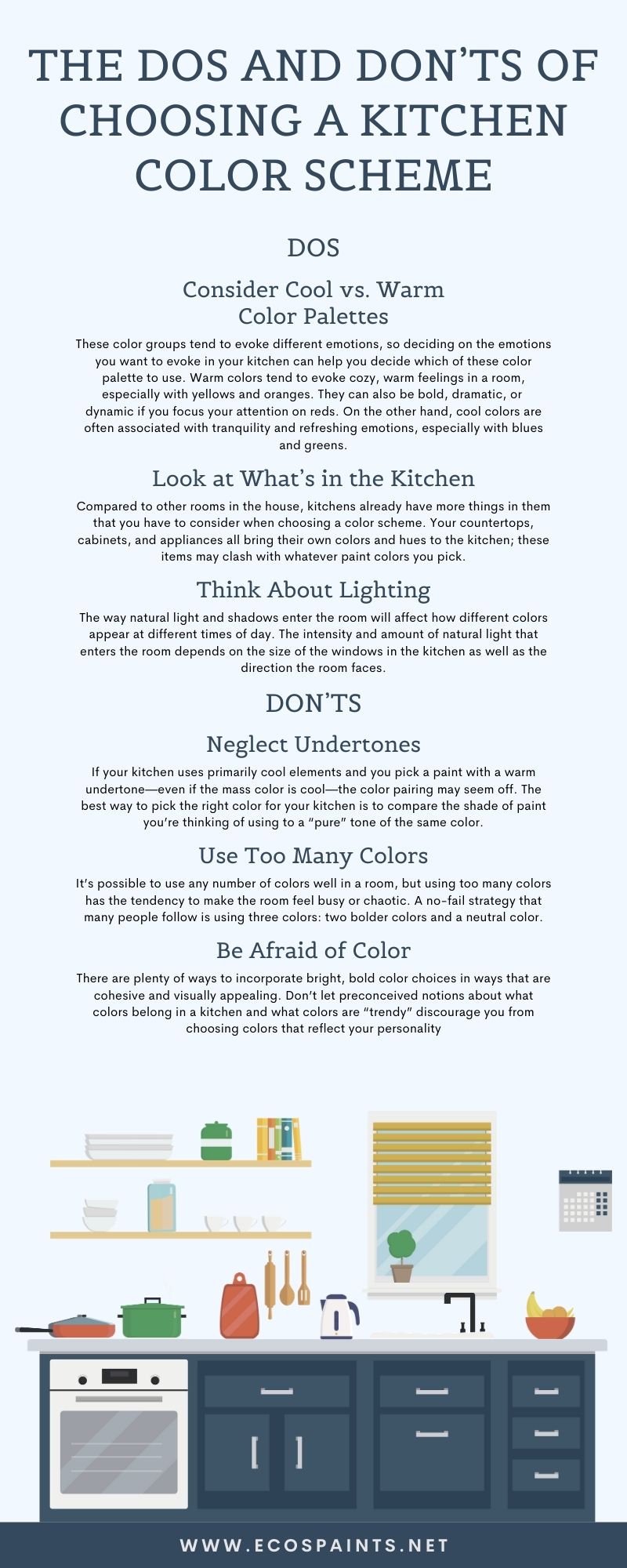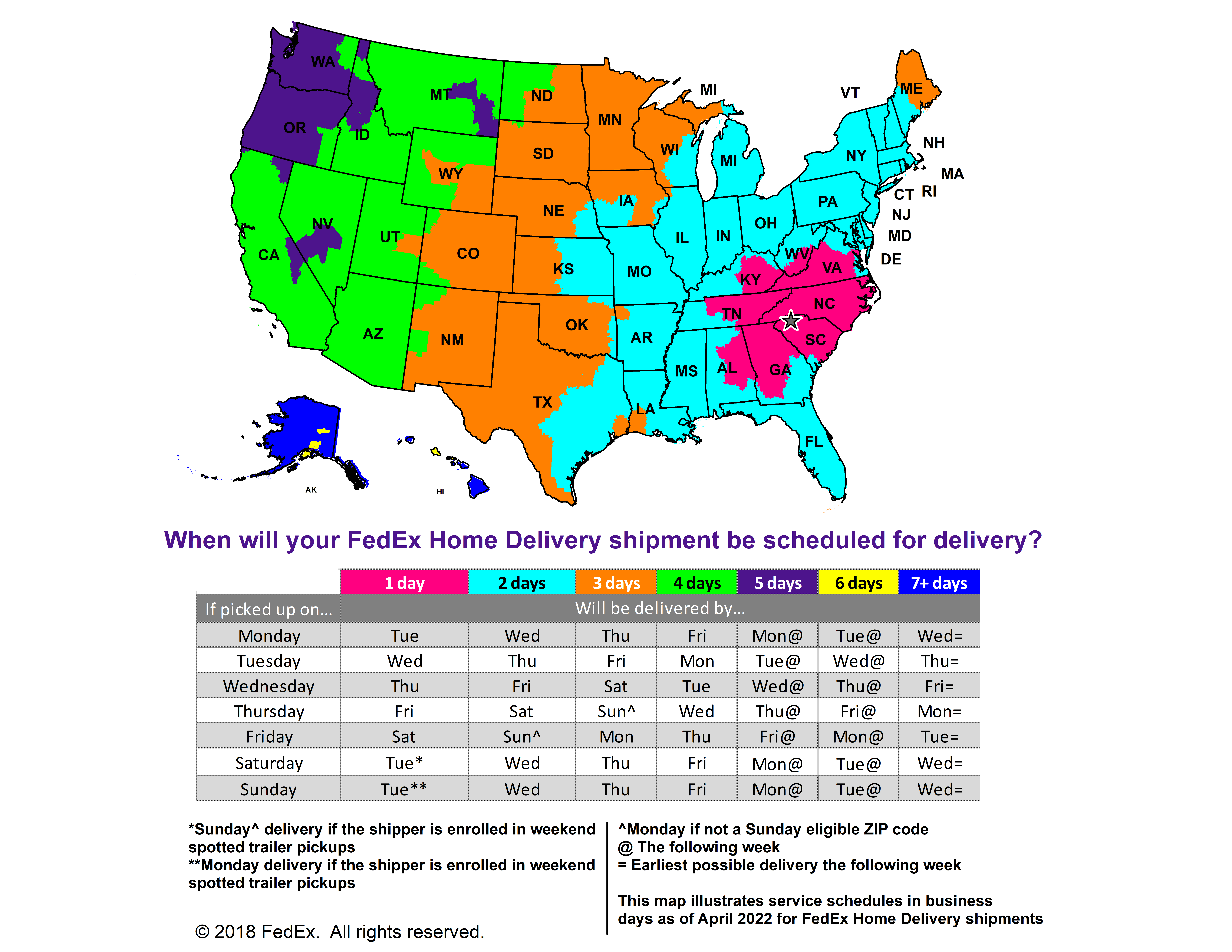The Dos and Don’ts of Choosing a Kitchen Color Scheme
 , sun
, sun
Picking colors for a kitchen remodel isn't as easy as it sounds. This helpful guide offers some dos and don'ts for choosing a color scheme for the kitchen.
Kitchens can be difficult spaces for decorators. Because the kitchen is primarily a work space, it’s easy to sacrifice form for function when it comes to the furniture, appliances, and even the paint on the walls. The simplest way to bring style into the kitchen is to use color to your advantage, but the task of picking colors for a kitchen can open up a whole host of other questions. Fortunately, we have a list of the dos and don’ts of choosing a kitchen color scheme to make the choice simpler.
Dos
Consider Cool vs. Warm Color Palettes
Most people learn about warm colors and cool colors during art class as children. Making up two halves of the color wheel, warm colors include reds, oranges, and yellows, while cool colors include greens, blues, and purples. These color groups tend to evoke different emotions, so deciding on the emotions you want to evoke in your kitchen can help you decide which of these color palettes to use. Warm colors tend to evoke cozy, warm feelings in a room, especially with yellows and oranges. They can also be bold, dramatic, or dynamic if you focus your attention on reds. On the other hand, cool colors are often associated with tranquility and refreshing emotions, especially with blues and greens. They’re often associated with being down-to-earth (greens) or more ethereal (blues and purples).
Another option other than sticking to one color palette or the other is contrasting them. For instance, you can make a ny yellow kitchen feel more grounded by adding a touch of a cooler color. Alternatively, you can vary a series of cooler blues with a dash of a bright, warm color.
Look at What’s in the Kitchen
A kitchen isn’t a completely blank canvas. Compared to other rooms in the house, kitchens already have more things in them that you have to consider when choosing a color scheme. Your countertops, cabinets, and appliances all bring their own colors and hues to the kitchen; these items may clash with whatever paint colors you pick. Decide whether part of your kitchen redecorating plans include repainting cabinets or putting in a new countertop. If that isn’t part of the plan, you’ll have to work around the existing colors.
The kitchen floor also adds color to the space, which you’ll have to work with if new flooring isn’t in the plan. Think about how different wall colors will look contrasted against different colors of hardwood, tile, or linoleum floors. If your floor’s pattern contains multiple colors, consider tying in one of those colors when you’re choosing a kitchen color scheme.
Think About Lighting
The way natural light and shadows enter the room will affect how different colors appear at different times of day. The intensity and amount of natural light that enters the room depends on the size of the windows in the kitchen as well as the direction the room faces. Rooms that face north tend to have less light, and the light is usually cooler with gray tones, which will make bold colors look more washed-out. South-facing rooms tend to have more light, which lends itself to a wider variety of colors. Rooms that face east will have the benefit of warm, cheerful light in the morning and dimmer, cooler light during the evening. West-facing rooms will have bold, bright light in the evening, but they’ll be more shadowy in the morning.
Along with natural light, think about the artificial light available in your kitchen. Colors tend to appear different depending on the type of light bulbs you use. For example, traditional incandescent bulbs have warmer tones, which lend themselves to warmer colors and work against cooler ones. Fluorescent lights have the opposite effect. Halogen lights mimic natural light the most and tend to work the best with the biggest variety of colors.
Don’ts
Neglect Undertones
Paint colors are typically created by mixing two different colors of paint, so when you’re looking at a paint color, you’re actually looking at two colors at the same time. One is the mass tone, or the main color, such as the blue in robin’s egg blue. The other is the color that’s added to create that particular tone, such as the white that makes robin’s egg blue pale. In other words, two paints that have the same mass color but different undertones will look completely different.
If your kitchen uses primarily cool elements and you pick a paint with a warm undertone—even if the mass color is cool—the color pairing may seem off. The best way to pick the right color for your kitchen is to compare the shade of paint you’re thinking of using to a “pure” tone of the same color. Pure colors have a similar mass tone and undertone. Comparing your chosen shade to the pure shade will help you see the undertone more clearly and decide whether it will look right in your space.
Use Too Many Colors
It’s possible to use any number of colors well in a room, but using too many colors has the tendency to make the room feel busy or chaotic. A no-fail strategy that many people follow is using three colors: two bolder colors and a neutral color. This strategy often follows the 60-30-10 rule, with your primary bold color taking up 60% of the room, the neutral color taking up 30% of the room, and the other bold color taking up 10% of the room. Following this rule will ensure that the room feels balanced rather than overwhelmed.
Be Afraid of Color
However, you shouldn’t use the risk of too many colors as a reason to neglect color altogether. There are plenty of ways to incorporate bright, bold color choices in ways that are cohesive and visually appealing. Don’t let preconceived notions about what colors belong in a kitchen and what colors are “trendy” discourage you from choosing colors that reflect your personality. And when you’re ready to choose a color, ECOS Paints has a wide variety of high-quality organic paints to choose from and a color library of 1,300+ colors.



























